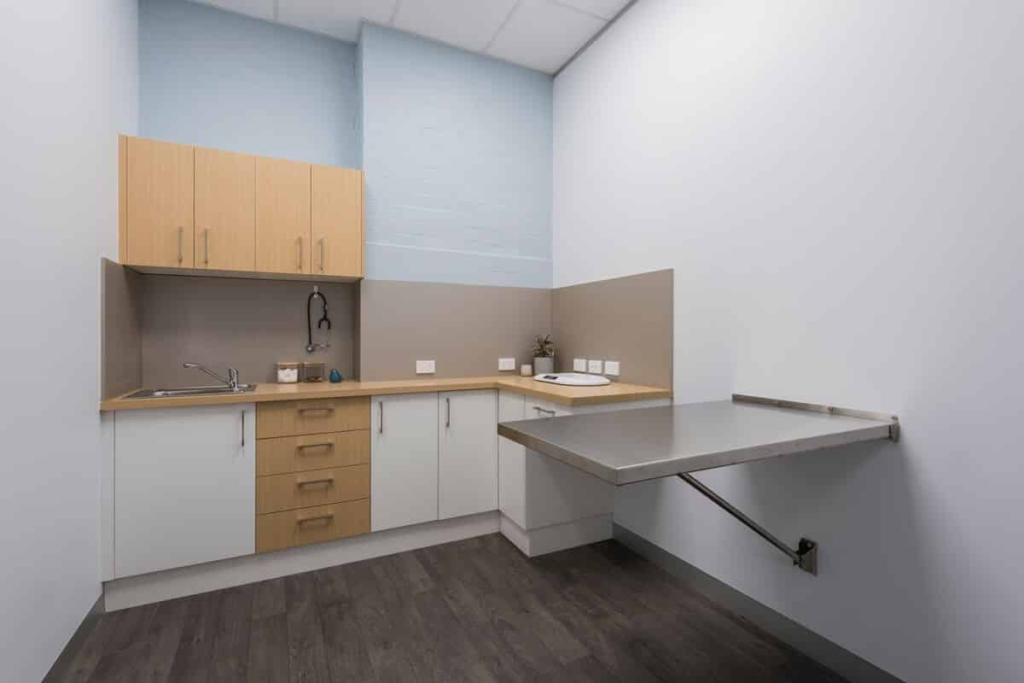
As the field of veterinary medicine continues to evolve, so too must the facilities that support it. A modern vet fitout is more than just a space for treating animals; it is a hub of wellness for pets and a place of comfort for pet parents. The design and layout of a veterinary clinic can significantly impact the efficiency of operations, the well-being of the patients, and the satisfaction of staff and clients alike. With these factors in mind, let’s delve into the essential features that compose a state-of-the-art vet fitout.
Functionality Meets Comfort
The functionality of a veterinary clinic is paramount, requiring a thoughtful balance between operational efficiency and client comfort. Modern vet clinics are integrating open-concept designs that facilitate ease of movement, clear sightlines for monitoring patients, and flexible spaces that can adapt to the varying needs of animals and their caregivers.
Integrated Technology
In an age where technology is central to many clinical procedures, a modern veterinary clinic must be outfitted with the latest advancements. This includes equipment for digital imaging, state-of-the-art surgical suites, and comprehensive practice management software systems that streamline patient records and scheduling. Technology is also pivotal in creating a seamless client experience, from check-in to payment and patient follow-up.
Zoning for Efficiency
Zoning is a design strategy that assigns specific areas for particular activities or types of care. This simplifies workflows, reduces cross-contamination risks, and enhances overall clinic productivity. A thoughtfully designed vet fitout will include distinct zones for reception, waiting areas, examination rooms, surgery, diagnostics, and recovery.
Innovative Waiting Rooms
The waiting area in a modern vet fitout should cater to the emotional needs of pets and their owners. This space can be revolutionised by offering separate zones for different types of animals, using calming colours and materials, and providing adequate space to prevent the anxiety and aggression that can arise in close quarters.
Examination and Treatment Areas
Examination and treatment areas should be spacious enough to accommodate the various species treated while allowing for efficient staff movement and workflow. Ergonomics also plays a vital role in these spaces, with adjustable tables and lighting ensuring both animal and practitioner comfort during check-ups and procedures.
Advanced Surgical Facilities
A modern veterinary clinic necessitates advanced surgical facilities, designed to maintain the highest standards of hygiene and functionality. This includes specialised ventilation systems, easily cleaned surfaces, and state-of-the-art surgical equipment. Provisions for pre-operative and post-operative care within these areas are crucial for patient recovery.
Sophisticated Diagnostic Suites
Diagnostic suites in a veterinary clinic must be equipped to provide rapid and accurate diagnoses. This entails having the necessary infrastructure to support equipment like MRI machines, CT scanners, and X-ray devices, which are integral to modern veterinary care.
Materials and Surfaces
The selection of materials and surfaces within a vet fitout is significant for both aesthetics and functionality. Durability is essential to withstand the wear and tear of a busy veterinary practice, while non-porous surfaces are critical for sanitation and hygiene. High-quality flooring, benches, and cabinetry that are both resilient and easy to clean are quintessential for maintaining a healthy environment.
Accessibility and Comfort
Accessibility is a dual-faceted component in veterinary design. Not only should the clinic be accessible for clients with varying needs, including those with disabilities, but also for animals of all sizes and mobility levels. Ramps, lifts, and wide corridors can make the clinic more inclusive while providing a stress-free experience for all visitors.
Sound Control
Sound control is a frequently overlooked but important aspect of a vet fitout. Effective noise-cancellation strategies can significantly reduce the stress levels in animals. This can be achieved through acoustic ceiling tiles, wall panels, and flooring solutions that minimise the transmission of noise between spaces.
Energy Efficiency and Sustainability
Today’s modern vet clinics are also paying close attention to energy efficiency and sustainability. From LED lighting to water-saving fixtures, eco-friendly features not only reduce operational costs but also demonstrate a commitment to environmental responsibility, an ethos that resonates with a large proportion of pet owners.
Brand Identity
Integrating brand identity into the clinic’s design can contribute to client trust and recognition. Personal touches, colour schemes, and design elements that reflect the practice’s ethos and philosophy can enhance the overall patient and client experience and set the clinic apart from competitors.
Concluding Thoughts
A modern vet fitout should be a symphony of purposeful design, cutting-edge technology, and client-centred comfort. It is a space that should facilitate the best possible care for animals while also providing a welcoming environment for pet owners. Investing in the right features and design practices can have a profound impact on the success and reputation of a veterinary clinic, ensuring both human and animal clients are at ease from the moment they enter the facility.
Modern veterinary practices require harmonious design elements that support the multifaceted aspects of animal care and client service. By embracing these essential features, a vet clinic can position itself as a forward-thinking, compassionate, and efficient provider in the competitive landscape of animal health and wellness.
